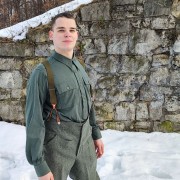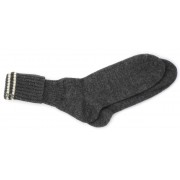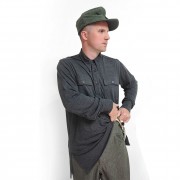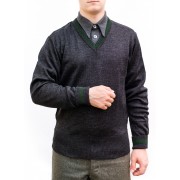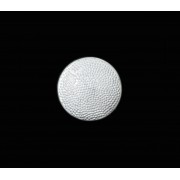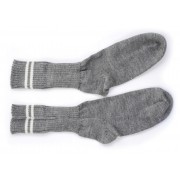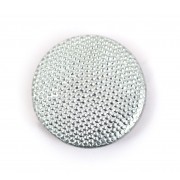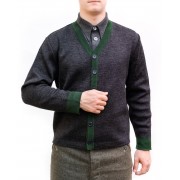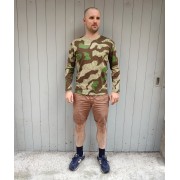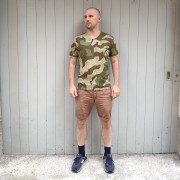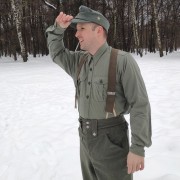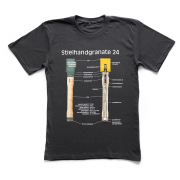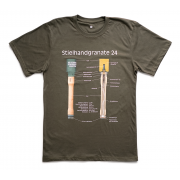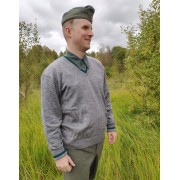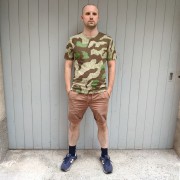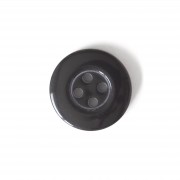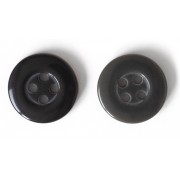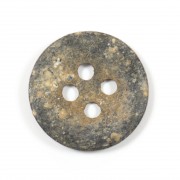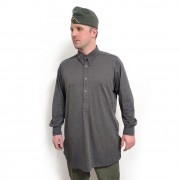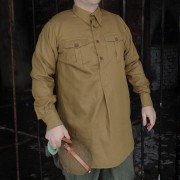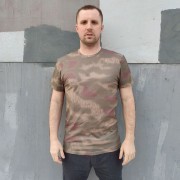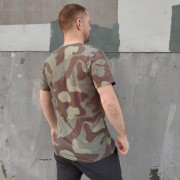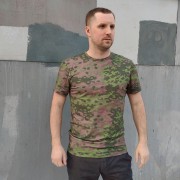How to choose the size?
You should take another shirt that fits you well. Lay it flat to the floor and make measurements using flexible ruler. The first, shoulder width (along the horisontal shoulder seam where shoulder straps should be, and behind the neck). This measurement is a key measurement, others depend on it. We give you also sleeve lenght and neck around for the information.
| Russian size | Shoulders | Neck around | Sleeve |
| 46 | 44 | 41 | 68 |
| 48 | 45 | 42 | |
| 50 | 46 | 43 | |
| 52 | 47 | 44 | |
| 54 | 48 | 45 | |
| 56 | 49 | 46 | |
| 58 | 50 | 47 |
| Russian size | Shoulders | Neck around | Sleeve |
| 46 | 1'5" ⅓ | 1'4" ¼ | 2'2"¾ |
| 48 | 1'5" ¾ | 1'4" ½ | |
| 50 | 1'6" ⅛ | 1'5" | |
| 52 | 1'6" ½ | 1'5" ⅓ | |
| 54 | 1'6" ⅞ | 1'5" ¾ | |
| 56 | 1'7" ⅔ | 1'6" ⅛ | |
| 58 | 1'7" ¼ | 1'6" ½ |
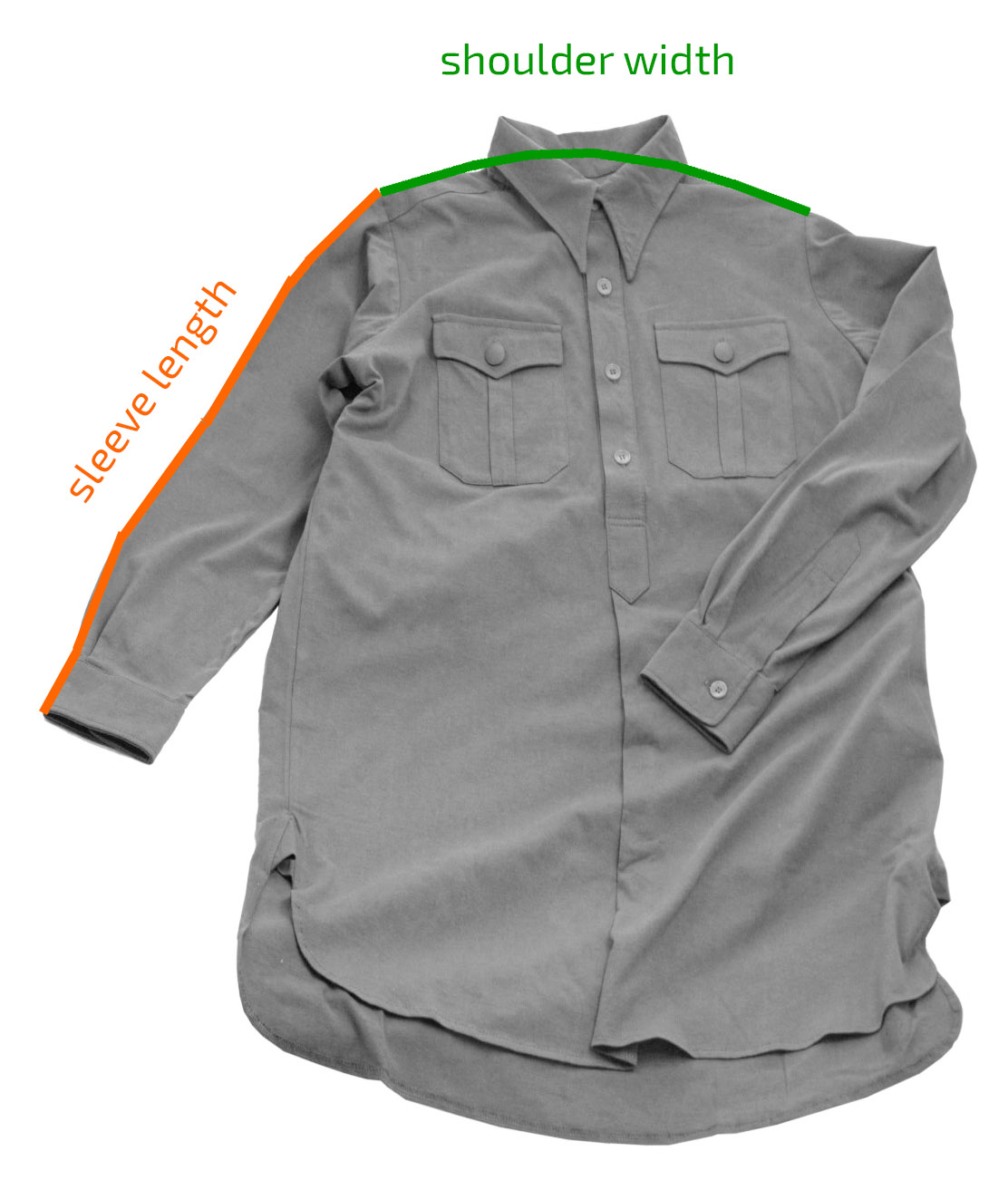
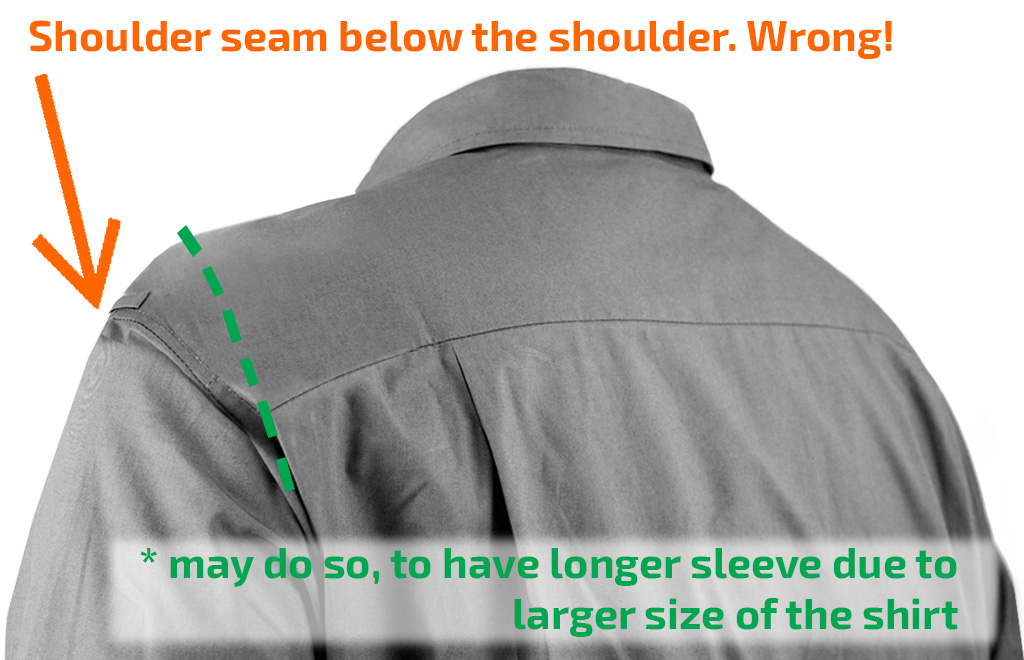
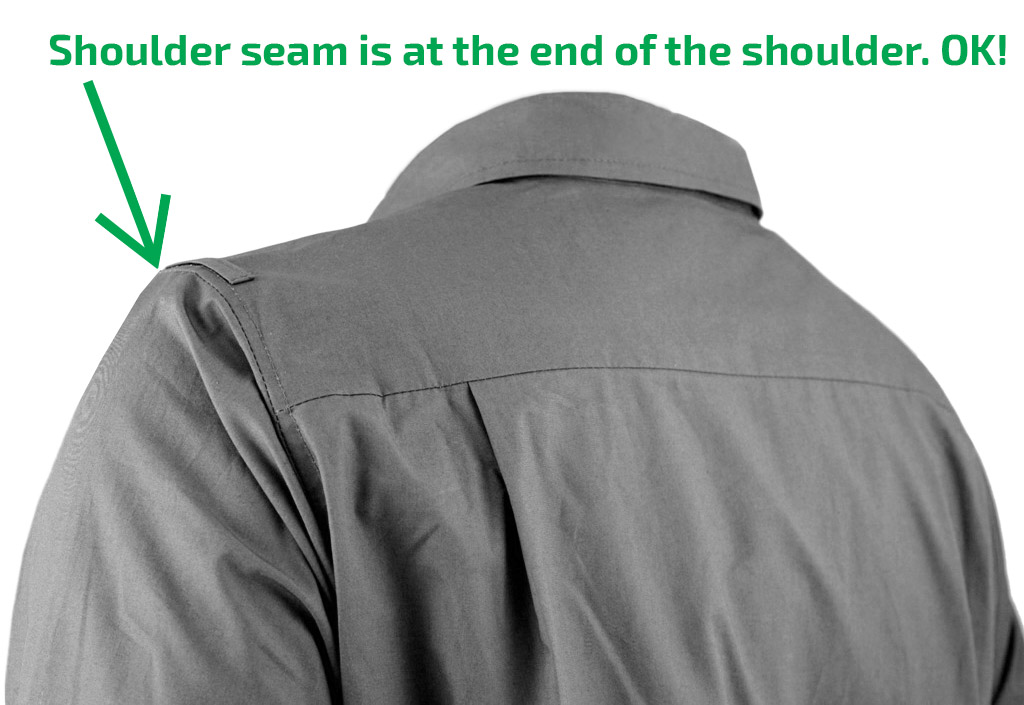
We do not produce shirts by order. Please choose a size from those in stock. If you do not understand the table, contact us, we will help you to find the size!
Description
Grey knitted shirt made of light, well-stretched knitted material. Factory quality. Own production, made in Russia. Black plastic buttons are easy to handle, not afraid of water, and not cold to the touch.
The shirt is suitable for reenactment and civilian use, especially for outdoor activities and sports, as it reliably covers the lower back (unlike T-shirts).
Before creating the shirt, the details of the original shirts were studied and taken into account. German military shirts of that time (except tropical ones) were characterized by thin and long collar ends. This is exactly what is done on our copy. Some of the original shirts had a crease on the chest (just below the button placket). The study of the original samples shows that such a fold is more typical for later samples (already with pockets), so there is this fold on the shirt.
At the collar, a paper label is sewn. The inscription Trikothemd (German: knitted shirt) and the size in European system. The label is easy to remove before using the shirt.
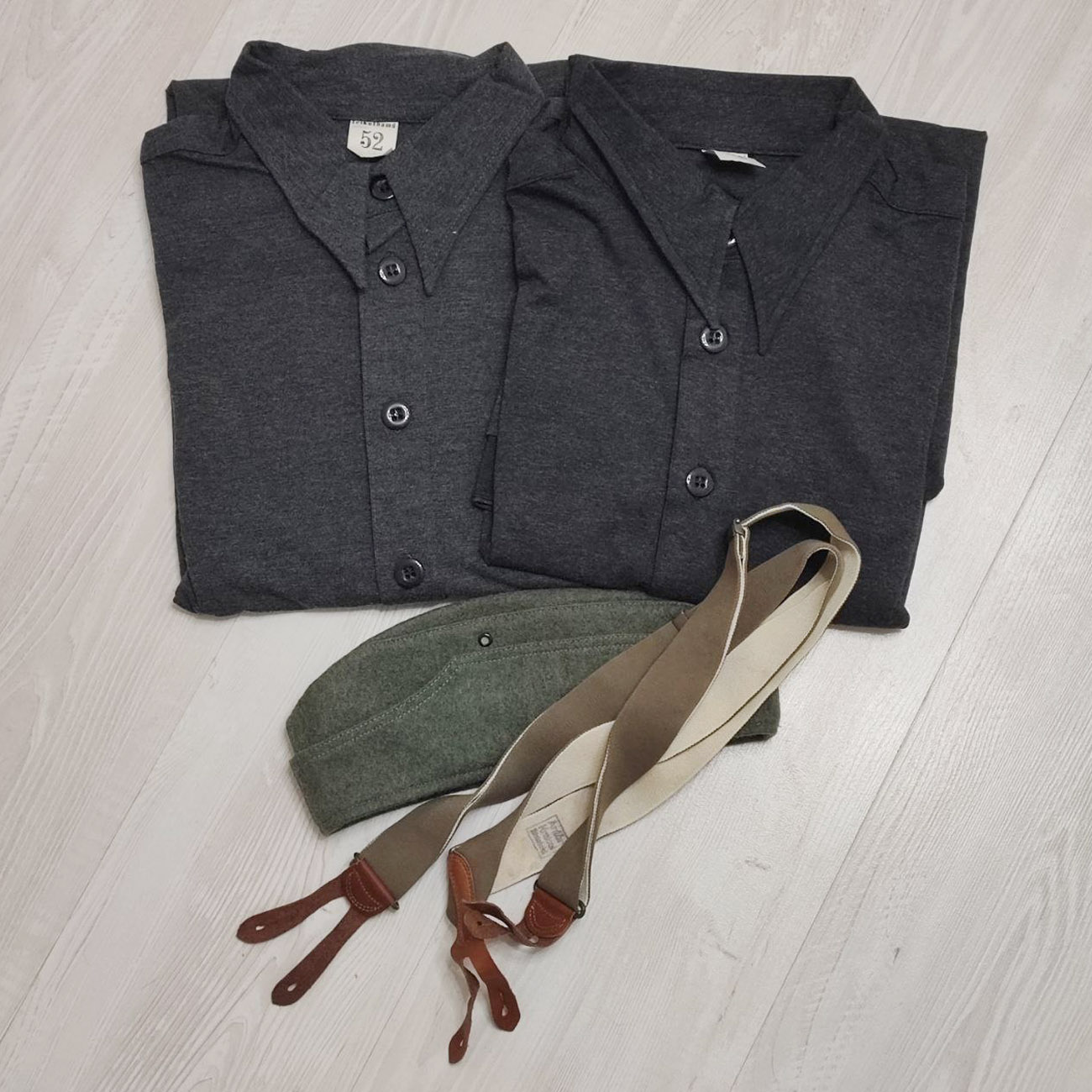
The photo shows the shades of shirts. Color from gray to dark gray. The product photo also shows different shades.

Photo of plastic buttons on the shirt.
Historical reference.
Grey shirt replaced the white colarless shirt, which was part of the underwear set of the Wehrmacht until 1941. The original material was called Aertex and contained a lot of viscose (fibers synthesized from wood). Viscose absorbs water better than cotton, herewith requires careful washing and ironing, otherwise it can stretch and even tear. So original shirts were rapidly losing its form (in addition to they were cut like a robe, to not to hamper the movements). German producers had no another choice, cotton was scarce, and viscose used everywhere instead of it.
The pockets on the shirt did not appear until 1942. In summer, the shirt was sometimes worn instead of a cloth jacket outside of combat, and pockets were necessary. By the end of the war, the bow fold disappeared from the pockets, the shape of the pocket and the valve itself was simplified to rectangular.










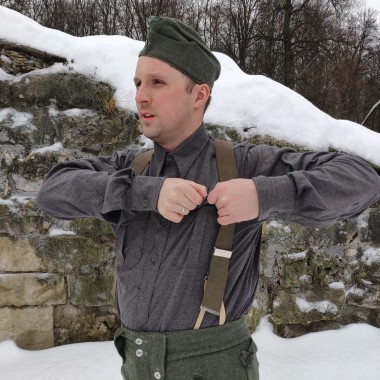











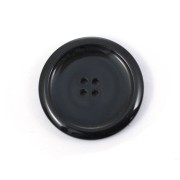
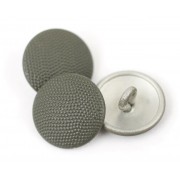
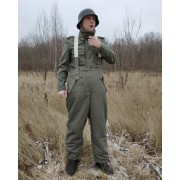
![[on order] Field blouse M36 with insignia [on order] Field blouse M36 with insignia](https://reenact.store/image/cache/afacfb9c74f543ca7f1a1e7285365560.jpg)
